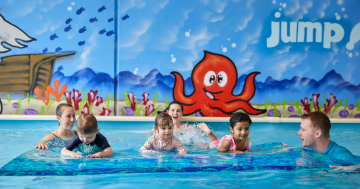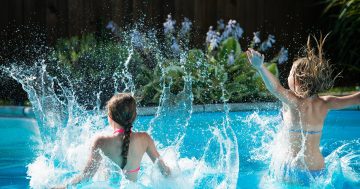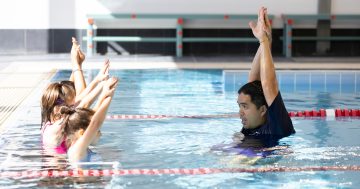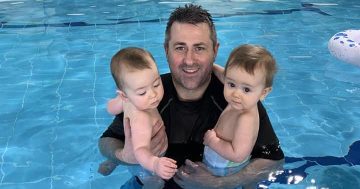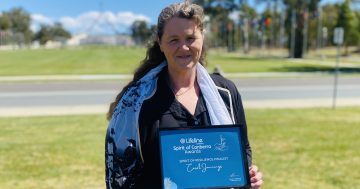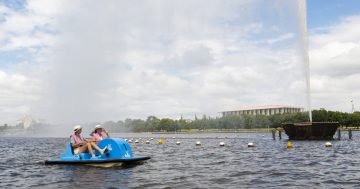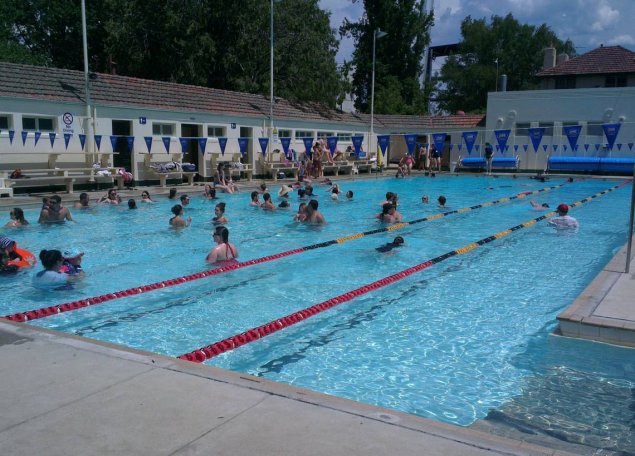
When our youngest was old enough to toddle, we were all standing outside by the pool when he toddled to the edge and threw himself, gleefully, into the water.
Once we’d fished him out, we had a bit of a laugh at his fearless outlook on life, but it’s not a laughing matter when you consider 21 children aged 0-4 died in Australian waterways last financial year, the majority of them (81%) as a result of a fall into the water (14% drowned while bathing).
Being less than a year old, our daredevil had had no swimming lessons, so we quickly taught him some basics like how to pull yourself along the edge of the pool to the steps to climb out.
His more timid older brother was the complete opposite. He refused to put his head under water until he was six, which meant we didn’t need to worry as much about the chances of him drowning at the beach or in a backyard pool.
For both children, good swimming teachers have been essential. We found them by trial and error as well as through recommendations from friends and it strikes me that as we are coming into peak swimming (and drowning) season, now would be an excellent time for RiotACT readers to share their recommendations for swim schools and particular teachers (let us know in the comments below).
We started out with a holiday program at Manuka Pool, and something along those lines at your local pool would be a good place to begin if you can’t afford to sign up for year-round weekly lessons. Manuka is offering a similar program this summer. Can you recommend a holiday program at your local pool?
If you’ve chosen to leave swimming lessons to your child’s school, have you found their offering worthwhile/sufficient?
We thought for about two years that we couldn’t afford weekly after school lessons but came to realise we’d have to make some sacrifices to do so as we saw them sitting on the sidelines while their peers playing in pools with ease. Watching the oldest doing freestyle, backstroke and breaststroke towards the end of this term, just over a year after he first put his head under, has made the expense seem worthwhile.
Have you tried weekly lessons at schools like Kings, Aquatots, Rowena’s (now operating Carol’s Swim School at CGGS), CISAC, Aqua Harmony or the AIS? Which worked best for you?
There will be plenty of reminders to book your children in over the next few weeks, with an ACT Government campaign on pool safety launching this morning.
According to ACT Minister for Planning and Land Management, Mick Gentleman, the home swimming pool is the most common location for drowning death and injury of children under the age of five.
“As a community we are all responsible for safety around pools and together we can reduce the risk of children drowning in swimming pools in the ACT,” the Minister said.
“It’s not only kids that live at houses with swimming pools that drown. Kids of friends and relatives that may be visiting or kids from neighbouring properties are also at risk. This is why we are calling on all people who own or live near a pool to be a backyard lifeguard; because the more backyard lifeguards we have, the more children in our community we can keep safe.”
Mr Gentleman said the new campaign would focus on encouraging Canberrans to:
· actively supervise children in and around the pool at all times
· know how to perform CPR which can save lives and, if performed early, help reduce serious or long-term injuries
· teach kids to swim and be safe around pools
· check their pool barriers meet current safety standards
· keep pool barriers clear of objects and plants that kids can use to climb into the pool area
· ensure the pool gate is shut at all times.
“The campaign concept draws on the positive connection people have with lifesavers/lifeguards and reinforces this message using the recognisable visual of a flag and red and yellow colours commonly associated with surf life saving,” he said.
The campaign will continue throughout summer and be promoted through television, radio, print, cinema, social media, back of bus advertising, posters, flyers, the Our Canberra newsletter and on Access Canberra shopfront screens. \
The new swimming pool safety campaign addresses one of the recommendations from a recent Coronial Inquiry into the drowning death of a toddler in an ACT backyard swimming pool, that being, for the ACT Government to deliver a pool safety public awareness campaign.
Pool barriers have an important role to play, and in the ACT, safety fences and gates must be at least 1.2m high with non-climbable vertical supports and no gaps exceeding 100mm. Land boundary fences that are part of the barrier must be at least 1.8m high.
Pool and spa owners who use a boundary fence as part of the safety fence may later need to install a separate safety fence because the boundary fence can become an ineffective safety barrier. For example, when neighbours place an object in their yard that causes the boundary fence to be ineffective. Certain objects are not permitted within a 1.2m arc swung from the top of the fence because a child could use them to climb over the fence.
An outdoor pool area must not be accessible through a door. A pool gate is required. Gates must swing away from the pool area and be self-closing. The gate’s latch release mechanism should be 1.5m above ground level or, if lower, must be shielded in accordance with the BCA to restrict access to the mechanism by children.












